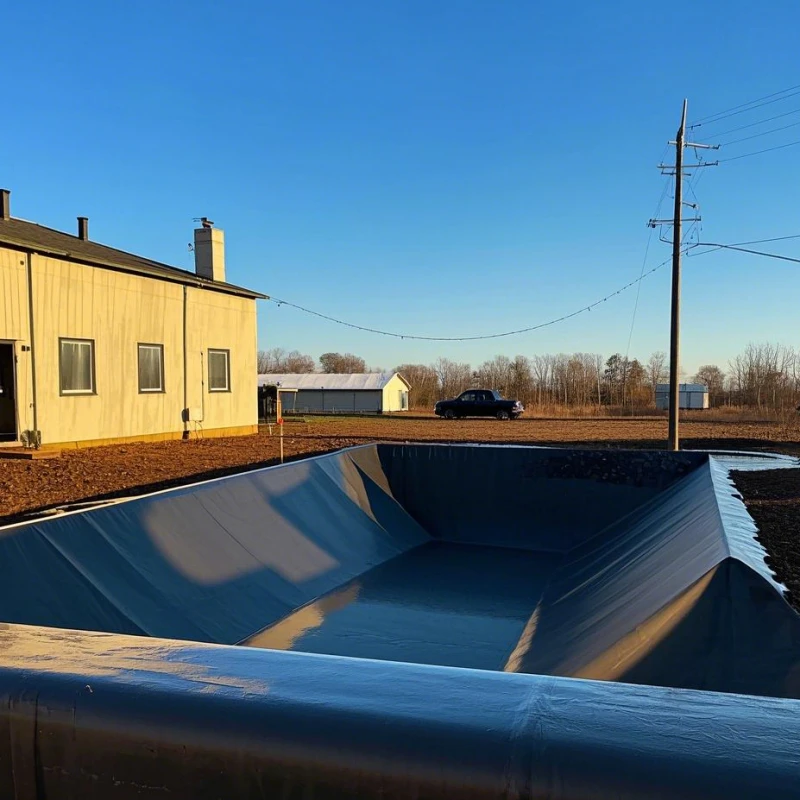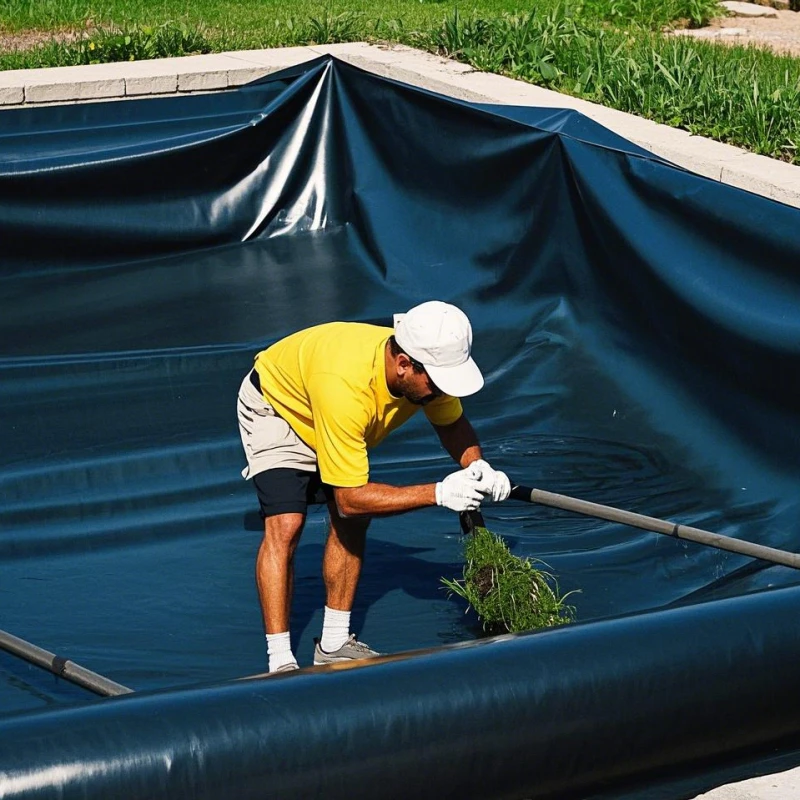Bentonite Pond Liner Installation: A Comprehensive Guide for Longevity and Efficiency
Pond liners are essential components in the construction and maintenance of ponds, reservoirs, and other water containment systems. They are designed to prevent water seepage, maintain water levels, and protect the surrounding environment. One of the most effective types of pond liners is the bentonite pond liner, renowned for its excellent water retention properties. This article will explore the benefits, installation process, and essential considerations for using bentonite pond liners, along with research data and practical insights to optimize performance and durability.
What Is a Bentonite Pond Liner?
A bentonite pond liner is a natural, clay-based material used to create impermeable barriers in ponds, lakes, and other water bodies. Bentonite is a type of absorbent clay formed from volcanic ash and is renowned for its ability to expand when exposed to water. When applied to a pond or reservoir, bentonite absorbs water and swells, forming a dense, waterproof layer that prevents seepage and protects the water's integrity.
Benefits of Bentonite Pond Liners
Bentonite pond liners offer several distinct advantages, making them an ideal choice for both residential and commercial water containment applications. Here are the key benefits:
Natural and Eco-friendly: Bentonite is a natural material, making it an eco-friendly option for water containment.
Cost-effective: Bentonite liners are generally less expensive than synthetic alternatives such as PVC or EPDM, making them a budget-friendly option for large-scale pond installations.
Durability: Bentonite clay has high resistance to environmental factors such as UV rays and extreme temperatures, offering long-term durability.
Low Maintenance: Once installed, bentonite liners require minimal maintenance compared to other pond liners.
Self-healing: Bentonite has the unique ability to self-heal when small cracks or punctures occur. Water entering these cracks activates the clay, which swells to fill the gap, ensuring continuous impermeability.

This picture shows a pond under construction for water storage, aquaculture and other purposes.
Key Research Findings and Data
Several studies have been conducted to assess the effectiveness and performance of bentonite pond liners. Below are some key data points:
| Property | Bentonite Pond Liner | Synthetic Pond Liners |
|---|---|---|
| Water Retention | 98%+ retention in clay-based applications | 90-95% retention in most cases |
| Swelling Capacity | Up to 30 times original volume | No swelling capacity |
| UV Resistance | Moderate, some degradation over time | High UV resistance |
| Installation Time | 2-4 days | 1-2 days |
| Cost per m² | $0.50 - $1.00 | $1.50 - $3.00 |
This table highlights that bentonite pond liners, while not as UV-resistant as some synthetic options, excel in water retention and self-healing, making them a cost-effective and durable solution for pond installations.
The Installation Process for Bentonite Pond Liners
Proper installation of bentonite pond liners is crucial to ensure their longevity and effectiveness. The process can be broken down into several key stages:
Step 1: Site Preparation
Before applying the bentonite liner, it is essential to prepare the pond site adequately. This involves clearing the area of debris, sharp rocks, and roots that could puncture the liner. The soil should also be smoothed and compacted to create a stable foundation.
Key Considerations:
Soil Type: Bentonite is most effective when applied to fine-grained soils like silty or clayey substrates.
Pond Shape: Ensure that the pond design allows for easy application of the liner, avoiding irregularities that could cause liner displacement.
Step 2: Liner Application
There are two common methods for applying bentonite liners to ponds: dry application and slurry application.
Dry Application:
In dry application, bentonite powder is spread evenly over the pond bottom, usually at a rate of 0.5–1.5 pounds per square foot, depending on the soil’s permeability and the desired liner thickness.
Once applied, the bentonite is compacted into the soil to create a dense, water-resistant barrier.
Slurry Application:
In slurry application, bentonite is mixed with water to create a thick, paste-like solution.
This slurry is then pumped onto the pond bottom using specialized equipment. The slurry is spread evenly and compacted to form a waterproof seal.
Both methods offer effective results, but slurry application tends to be quicker, especially for larger ponds.
Step 3: Compacting the Liner
After the bentonite is applied, it must be compacted to ensure it forms a solid, impermeable barrier. This can be achieved using heavy equipment, such as rollers or compactors. Proper compaction is vital to activate the bentonite’s swelling properties, which prevent water seepage.
Step 4: Testing the Liner
Once the installation is complete, it's important to test the liner’s effectiveness. The most common method is a water retention test, where the pond is filled with water and monitored for leakage over several weeks. Any significant water loss would indicate a problem with the liner that needs to be addressed.
Step 5: Maintenance
Bentonite liners require minimal maintenance, but regular checks for cracks or punctures are recommended, especially after extreme weather events. Bentonite’s self-healing properties usually take care of small damage, but larger issues may require reapplication.
Considerations for Successful Bentonite Pond Liner Installation
Soil Conditions: The success of bentonite liners largely depends on the soil’s ability to retain moisture. Sandy or highly porous soils may not work well with bentonite unless the application rate is increased.
Climate: Bentonite is most effective in areas with moderate to high rainfall. In dry climates, the clay may not swell sufficiently, leading to potential leakage.
Pond Depth: Shallow ponds require less bentonite, while deeper ponds may need thicker layers to prevent seepage.
Application Rate: The ideal bentonite application rate varies depending on the pond’s characteristics and the soil type. Below is a recommended application table for different pond conditions:
| Soil Type | Bentonite Application Rate (lbs/ft²) | Recommended Thickness (inches) |
|---|---|---|
| Fine Clay/Loam | 0.5 - 1.0 | 2-3 inches |
| Silty/Sandy Soil | 1.0 - 1.5 | 3-4 inches |
| Gravelly Soil | 1.5 - 2.0 | 4-5 inches |
This table is an approximation, and actual requirements may vary based on site-specific factors.
Conclusion
Bentonite pond liners provide a natural, cost-effective solution for water containment in ponds, lakes, and reservoirs. Their self-healing properties, high water retention, and low maintenance requirements make them a popular choice among pond owners. Proper installation is essential to maximize their effectiveness, with factors such as soil type, pond depth, and application rate playing significant roles.
By following the installation steps and considering the various factors outlined in this guide, you can ensure a successful bentonite pond liner installation that provides long-lasting protection against water seepage.
In conclusion, the combination of practical installation methods and reliable performance data makes bentonite pond liners a top choice for maintaining the integrity of water features, ensuring both environmental sustainability and cost-effectiveness.
About Haoyang Environmental Co., Ltd.
For all your geosynthetic material needs, Haoyang Environmental Co., Ltd. is a trusted partner. Established in 2008, Haoyang specializes in high-quality geosynthetic products, including liners, used for environmental engineering projects, soil remediation, and water containment solutions. With ISO certifications, a strong R&D team, and over 30 patents, Haoyang offers cutting-edge solutions that ensure sustainability and efficiency for your projects. Explore our range of advanced materials designed for environmental protection and long-term performance. Contact us now!

897.webp)
942.webp)
237.webp)